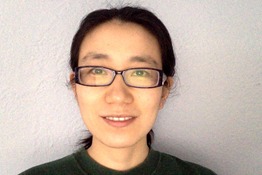Program Information
JACK FOWLER JUNIOR INVESTIGATOR COMPETITION WINNER: First Clinical Prompt Gamma Imaging for in Vivo Range Verification in Pencil Beam Scanning Proton Therapy
Y Xie1*, E Bentefour2 , G Janssens2 , J Smeets2 , F Vander Stappen2 , L Hotoiu2 , L Yin1 , D Dolney1 , S Avery1 , F O'Grady1 , D Prieels2 , J McDonough1 , T Solberg3 , R Lustig1 , A Lin1 , B Teo1 , (1) University of Pennsylvania, Philadelphia, Pennsylvania, (2) IBA, Louvain-la-neuve, Brabant Wallon, (3) UCSF Comprehensive Cancer Center, San Francisco, CA
Presentations
WE-G-605-1 (Wednesday, August 2, 2017) 4:30 PM - 6:00 PM Room: 605
Purpose: To report the first clinical results and value assessment of prompt gamma (PG) imaging for in vivo proton range verification in pencil beam scanning (PBS) mode.
Methods: A standalone, trolley-mounted, prototype PG camera, utilizing a knife-edge slit collimator design was used to record the PG signal emitted during proton irradiation for two brain cancer patients. The camera was aligned perpendicular to the central beam axis using an embedded laser. The recorded PG depth detection profiles of individual pencil beam spots were compared to the expected profiles simulated from the treatment plan.
Results: For the first patient, 6 treatment fractions recorded over three weeks, the mean range shifts aggregated over all spots in 9 energy layers were -0.8±1.3 mm for the lateral field, 1.7±0.7 mm for the right-superior-oblique field and -0.4±0.9 mm for the vertex field. These shifts were smaller than the range uncertainty margins applied to the target during planning. For the second patient, the beam path traversed a more heterogeneous region that included the sinuses and inter fraction differences in the measured range for spots traversing the sinus region were observed.
Conclusion: This study demonstrates the feasibility and illustrates the distinctive benefits of prompt gamma imaging for the PBS treatment mode. Accuracy in range verification was found in these two clinical cases to be better than the range uncertainty margin applied in the treatment plan. These results lay the foundation for additional work towards tighter integration of the system for in vivo proton range verification and quantification of range uncertainties.
Contact Email:
